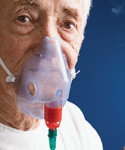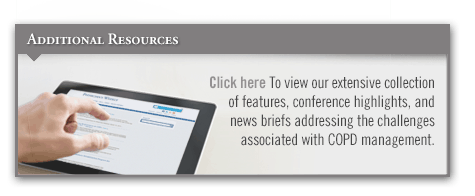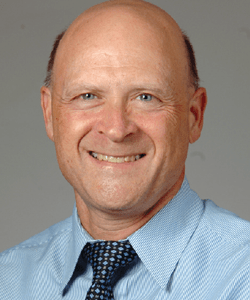In 2010, COPD surpassed stroke to become the third leading cause of death in the United States, affecting an estimated 24 million Americans. Studies indicate, however, that as many as half of those affected by COPD are undiagnosed, partially because symptoms of the disease come on slowly and worsen over time. As a result, many patients dismiss their symptoms and delay seeking diagnosis and treatment until their COPD reaches an advanced stage.
In 2007, the National Heart, Lung, and Blood Institute (NHLBI) launched the COPD Learn More Breathe Better campaign, a program designed to raise awareness about COPD. To assess attitudes, knowledge, practices, and lifestyle habits related to COPD, the NHLBI also conducts a yearly survey among a nationally representative sample of U.S. adults. In 2013, the NHLBI’s annual survey included patients as well as primary care physicians (PCPs), obstetricians/gynecologists, and nurse practitioners (NPs). Results showed that there continues to be a lack of communication between patients and providers about COPD, according to James P. Kiley, PhD. “More Americans—smokers, in particular—are talking to their healthcare providers about the symptoms of COPD, which is a sign that awareness efforts are taking hold,” says Dr. Kiley. “That said, patients and providers can still do more.”
Missed Opportunities
The NHLBI survey found a dramatic increase in the numbers of current smokers who had discussed symptoms with their doctors, rising from 42% in 2009 to 67% in 2013. PCPs are also becoming more familiar with COPD evaluation methods and using them more frequently; in addition, NPs are catching up to PCPs in this regard (Table 1). At the same time, however, 26% of adults who reported experiencing COPD symptoms stated that they did not discuss these symptoms with their healthcare providers. While the vast majority of current smokers who reported COPD symptoms had a conversation with their physician about their smoking history, significantly fewer former smokers reported having a similar conversation.
The survey results indicate that COPD awareness issues contribute to missed dialogue. “For example,” Dr. Kiley says, “three of the top reasons cited by people with COPD symptoms who did not talk to their physician were 1) not thinking about it, 2) indicating that they’ve had these problems for years, and 3) believing that their symptoms will go away in time. These instances represent missed opportunities to take advantage of the teachable moment.” In addition, only 18% of symptomatic patients who discussed their symptoms heard their provider mention COPD.
A good conversation between patients and providers about COPD can make a significant difference for disease sufferers, says Dr. Kiley. “We know that early diagnosis and treatment can improve daily life for those with COPD, but this can’t be accomplished unless there is open dialogue. These conversations are the lynchpin of diagnosis. The survey indicated that patients are the biggest trigger for these conversations.” PCPs were more likely to ask about respiratory symptoms when patients mentioned them when compared with asking about these symptoms during physicals or as a part of regular questioning of current/former smokers (Table 2).
Continued Outreach
According to Dr. Kiley, the NHLBI will continue to lead efforts in enhancing public education and outreach, primarily through the COPD Learn More Breathe Better campaign. “The campaign is a call to action among those at risk for COPD,” he says. “We also want to learn about how healthcare providers—particularly those in primary care—are addressing and treating these patients.” He adds that the campaign has developed tools and other resources to facilitate COPD discussions in the exam room.
The NHLBI is also trying to bolster the dialogue on COPD with workshops that are attended by representatives from federal agencies and institutes invested in research and education about the disease. Attendees share information about current COPD activities and identify areas where collaboration could improve prevention, ascertainment, diagnosis, and treatment. Plans are in the works to have representatives meet with external, non-federal stakeholders to discuss strategies for responding to the growing COPD burden.
“While it’s encouraging that there have been positive developments, the challenge remains that more than one in three Americans still don’t know what COPD is or how it affects them,” Dr. Kiley says. “Less than half of these people understand that COPD can be treated. This is the only major disease state in which the number of annual deaths is not decreasing. It’s critical for healthcare providers and patients to understand the risks and be proactive about recognizing symptoms as early as possible.”




 admin
admin